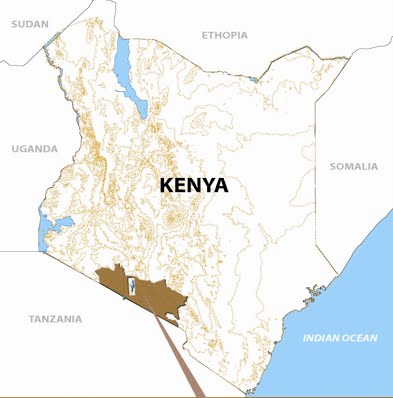In the Southern Rift of Kenya pastoralist land is under communal land tenure in the form of Group Ranches. Each Group Ranch has a committee and everyone who is based in the area is a member. Group Ranch boundaries are defined but not fenced and traditionally there is a good deal of collaboration between neighboring Group Ranches, particularly with regard to grazing. Despite this, in the past there was no joint management and planning, which transcended these boundaries and looked to the future of the area as a whole.
Livestock is a key asset in the arid and semi-arid areas of the South Rift region of Kenya. This forms quite a big part of the meat industry suppliers and is estimated to be 80% of the producers. The livelihoods of pastoralists are directly linked to their animals, and thus to the environment in which they live in.
Pastoral communities should capitalize on its livestock wealth by taking advantage of both the opening of KMC and the new markets in Asia, particularly in the affluent and nearby Middle East. This could be key to improving the livelihoods of the pastoral communities by improving the quality of livestock that will compete with other livestock producing areas.
Project Objective
To improve livestock productivity through better breeding and husbandry techniques designed to increase marketable beef outputs without prejudicing traditional efficient drought resilience strategies.
Expected Outputs
o Improved livestock breeds across the South Rift
o Better market outlets and competitive production
o Creation of more grass banks and rangelands rehabilitation
Project Location
The current project location is Iluanat Centre in the Mailwa Group ranch in Kajiado District, some 15km from Namanga town.
Project Programs
o Breeding Stock: This will involve the development of a centre that will produce bulls to be sold to the community at subsidized prices especially targeting large stock farmers who can afford to purchase the bulls and who will not benefit from a pull system due to the size of their herds.
o Bull Camps: For the livestock farmers who are not large stock farmers and have 10 animals or less - which makes up 90% of these communities - a bull camp will be established initially in 5 sites targeting 100 animals each (500 animals) per breeding season. Breeding happens twice a year therefore this program will target 1000 animals per year. Ten breeding bulls will be purchased so that each camp will have two bulls at any one breeding season.
o Livestock Health Program: As farmers improve their herds it will be important to train them in basic livestock management techniques so that they do not lose their stock due to poor disease control and other management practices.
Community Input
The Mailwa community set aside 2 acres of land where the livestock holding ground is located and individual farmers volunteered 600 acres for grazing of the animals for the three years of this first phase of the project. The livestock officer in the area developed a plan for the site and continues to give technical advice. The area was assessed for the breeding program and was found to be viable as the area is close to a community bore hole, an old cattle dip that has been rehabilitated and the grass in the area is of high quality.
Breed Preference
There are two breeds that are tolerant to the hash climatic conditions of the arid and semi- arid areas apart from the Maasai Zebu i.e. the Boran and the Sahiwal cattle. The Sahiwal cattle are both beef and dairy producers unlike the Boran, which is only a beef producer. The communities had a high preference for the Sahiwal breed for this main reason. It is tick-resistant, heat-tolerant and noted for its high resistance to parasites, both internal and external. Cows average 2270 kg of milk during lactation while suckling a calf and much higher milk yields have been recorded. Their color can range from reddish brown through to the more predominant red, with varying amounts of white on the neck, and the underline. In bulls the color darkens towards the extremities, such as the head, legs and tails.
Project sustainability
The breeding stock is estimated to produce 60 liters of milk per breeding season, which will be sold to milk processors and the sale of bulls and old stock will enhance project sustainability.
About Us
The South Rift Valley region of Kenya where SORALO works spans an area of approximately 850,000 hectares (2,100,396 acres) covering a range of topographic and ecological conditions and hosts one of the richest large mammal assemblages on earth. The productivity and survival of wildlife and livestock in this area depend on a common ecological strategy rooted in mobility and feeding efficiency. This has made it possible for wildlife and pastoral livestock to co-exist for over 3,000 years without significant degradation of the environment. This area comprises of mainly arid and semi-arid lands, and unfortunately has a history of long-term marginalization and neglect, particularly by governmental policies and departments. However due to its rich culture, wildlife, ecology and landscape the potential for diversification of land use and livelihood generation, particularly through tourism, is high.


No comments:
Post a Comment